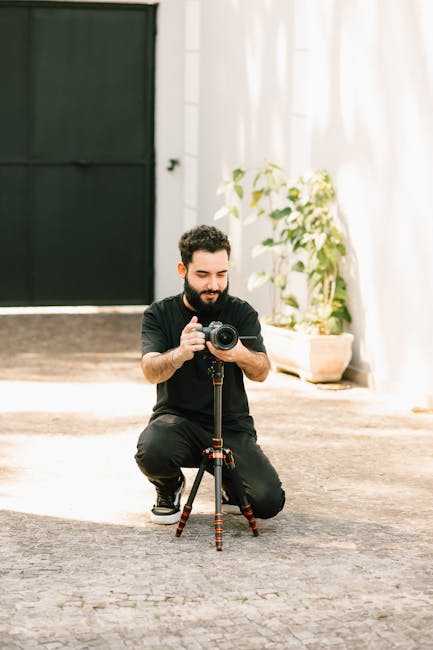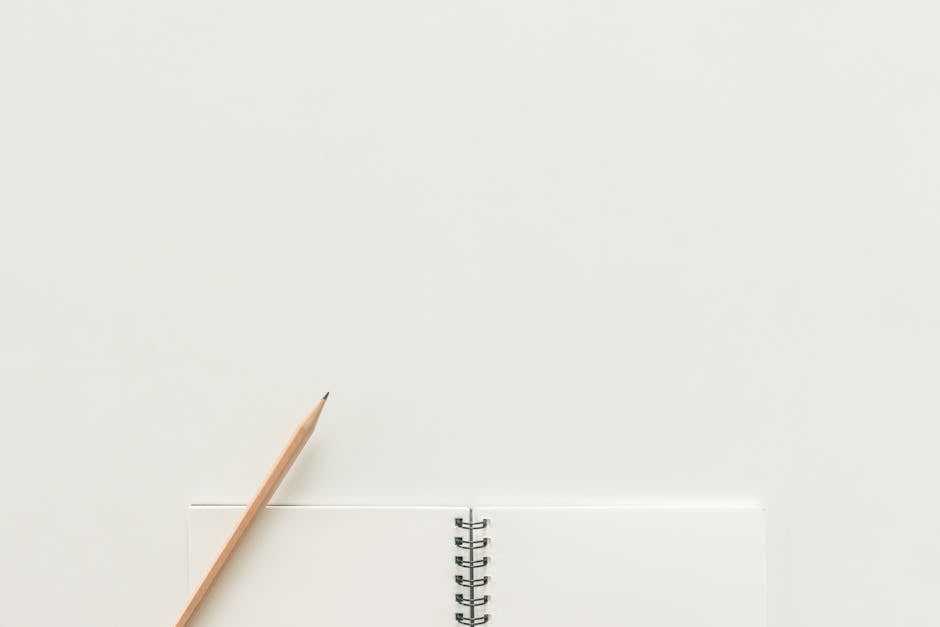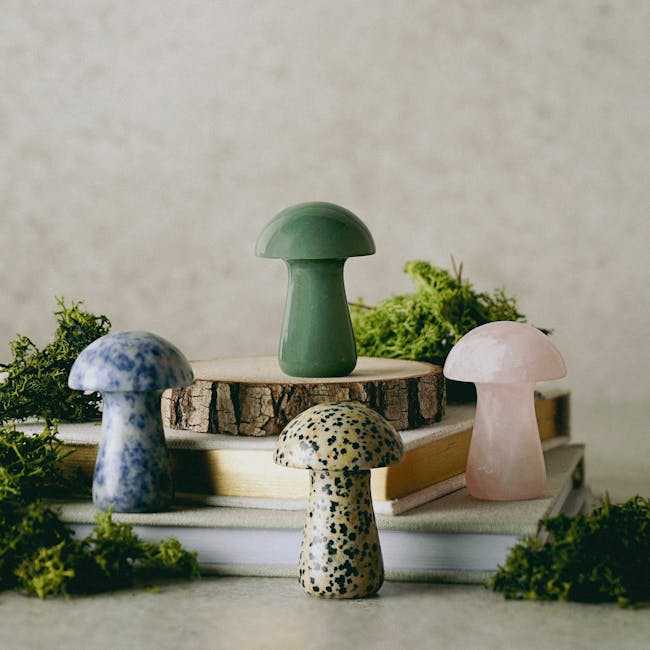Table of Contents
- Exploring Color Theory for Vibrant Watercolor Landscapes
- Techniques to Capture Depth and Texture in Your Paintings
- Choosing the Right Paper and Brushes for Stunning Results
- Incorporating Natural Elements for Realistic Landscape Compositions
- Q&A
- In Summary
Exploring Color Theory for Vibrant Watercolor Landscapes
Understanding the fundamentals of color can significantly enhance your watercolor landscapes. Color theory serves as a vital framework for artists, helping to create compositions that evoke emotion and draw the viewer’s attention. By mastering the relationship between colors, such as complementary, analogous, and triadic schemes, you can build depth and vibrancy in your work. Successful landscapes often utilize color contrasts, allowing foreground elements to pop against a softer background, thus achieving a cohesive yet dynamic piece.
One effective approach is to create a color palette tailored to your specific landscape scene. Consider the following elements when building your palette:
- Local Color: Base your color choices on the natural hues found in the environment.
- Light and Shadow: Use lighter and darker tones to mimic the effects of natural lighting.
- Seasonal Changes: Reflect the mood of a season—vibrant blooms in spring versus muted tones in autumn.
To apply these concepts effectively, you can utilize an overlay technique. Begin by laying down a wash of your lightest color, allowing it to dry completely. Layer your darker shades gradually, employing glazing to add richness without muddying the colors. This technique not only deepens the palette but also creates a sense of atmosphere, making your landscape resonate with visual warmth or coolness depending on your choices.
consider how color temperatures affect the perception of distance and space in your paintings. Warm colors such as reds and yellows tend to advance toward the viewer, while cool colors like blues and greens recede into the background. Knowing how to manipulate these temperatures allows you to create depth within your landscapes easily. Experiment with blending warm and cool tones to suggest intimacy or expansiveness in your scenes, leading to captivating and immersive artwork.


Techniques to Capture Depth and Texture in Your Paintings
Capturing depth and texture in watercolor landscapes involves a blend of techniques that create a sense of dimensionality and realism. One effective method is the wet-on-wet technique, where you apply wet paint onto wet paper or wet paint already laid down. This technique allows colors to blend smoothly, creating soft edges and atmospheric effects. By layering different hues and allowing them to merge, you can achieve stunning gradients that evoke the fluidity of clouds or the murky depths of a forest.
Another noteworthy approach is dry brush technique, which involves using a dry brush to apply paint to dry paper. This method is excellent for imparting fine details and textures, such as the rough bark of trees or the delicate wisps of grass. To employ this technique effectively, choose a stiff bristled brush and minimal water to retain the brush strokes, allowing the underlying paper to show through. The interplay of light and dark created by this technique enhances the overall depth of your landscape.
Using glazing is also a crucial technique to enrich texture and depth. Glazing involves applying a thin, transparent layer of paint over a dried layer. This allows you to build luminous colors and achieve complex shadows without disturbing the intricate details you’ve already created. For instance, glazing with a dark blue over a green field can simulate a shadow effect, making the landscape appear much more three-dimensional. Consider the following table to visualize how different glazes can shift the mood and tone of your work:
| Layer | Color | Effect on Landscape |
|---|---|---|
| Base Layer | Light Green | Represents sunlit grass |
| First Glaze | Transparent Yellow | Adds warmth and vibrancy |
| Second Glaze | Deep Blue | Creates depth in shadows |
Lastly, incorporating textural mediums, such as sea salt or sponges, can introduce unexpected elements to your watercolor landscapes. For instance, applying salt to wet paint can result in unique dappled textures reminiscent of rocky surfaces or grassy hills when the salt draws the pigment outward as it dries. These mediums not only contribute to the visual complexity but also enhance the sensory experience of viewing your artwork. Embrace experimentation with these techniques to find which combination best captures the essence of your landscape vision.


Choosing the Right Paper and Brushes for Stunning Results
When embarking on your watercolor landscape journey, the choice of paper plays a crucial role in achieving breathtaking results. Different types of watercolor paper vary in texture, weight, and absorbency, which can dramatically impact your final artwork. Most artists prefer using cold-pressed (also known as NOT) watercolor paper for its pronounced texture, which enhances the natural flow and blending of colors. Alternatively, hot-pressed paper provides a smooth surface that is ideal for fine details and precision work but may not hold water as well. Consider the following types:
- Cold-Pressed Paper: Great for varied techniques and textures.
- Hot-Pressed Paper: Best for detailed illustrations.
- Rough Paper: Offers a more organic feel with its pronounced texture.
- Watercolor Blocks: These are glued on all sides, preventing warping.
Brush selection is equally vital in cultivating your artistic expression. Watercolor brushes come in a range of shapes and sizes, allowing you to manipulate paint effectively. For landscapes, it’s beneficial to have a variety of brush types at your disposal. Round brushes are fantastic for general washes and delicate lines, while flat brushes allow for more precise strokes and broader washes. Here’s a quick reference table for common brush types:
| Brush Type | Best Use |
|---|---|
| Round Brush | Detail work and washes |
| Flat Brush | Bold strokes and washes |
| Fan Brush | Texture and foliage |
| Mop Brush | Soft washes and blending |
As you explore your creativity, consider the weight of the paper as an essential factor. Higher weight papers (300 gsm and above) can handle more water without warping, making them a top choice for extensive washes and techniques that require layering. Lighter weights (200 gsm) are suitable for quick sketches and less demanding projects. Matching the paper weight to your painting style and techniques will elevate your results significantly. With the right combination of paper and brushes, your watercolor landscapes will come to life in stunning detail.


Incorporating Natural Elements for Realistic Landscape Compositions
In the world of watercolor landscapes, the integration of natural elements plays a crucial role in creating compositions that resonate with viewers. These elements can add depth, texture, and realism, transforming a simple scene into a captivating work of art. To harness the beauty of nature effectively, consider incorporating the following aspects:
- Color Harmony: Use a color palette inspired by the natural world. Observing how colors interact in landscapes can inform your choices and help develop a cohesive composition.
- Textures: Experiment with various watercolor techniques to mimic the textures found in nature. Wet-on-wet, dry brushing, and lifting can all contribute to achieving realistic effects, from the roughness of tree bark to the softness of clouds.
- Depth and Perspective: Establish a sense of distance by layering elements. Use lighter shades for objects that appear further away and deeper hues for those in the foreground, enhancing the three-dimensionality of the scene.
Consider utilizing symmetry and asymmetry to guide the viewer’s eye through your artwork. A balanced composition, which may include a central focus such as a tree or mountain, can evoke a sense of harmony. Alternatively, an asymmetrical layout can create a dynamic feel, encouraging exploration of the entire piece. Below is a simple table to help conceptualize the distinction:
| Aspect | Symmetrical Composition | Asymmetrical Composition |
|---|---|---|
| Balance | Even distribution; calming effect | Dynamic tension; encourages movement |
| Focus | Central point | Multiple focal points |
| Viewer Engagement | Easy to digest | Provokes exploration |
don’t shy away from the inclusion of additional details that can enhance your painting. Elements like birds in the sky, rippling water, or windswept grass can bring life to your landscapes. These subtle touches not only add realism but also create a narrative within the piece. Always remember to step back from your work periodically; this will give you a fresh perspective on how well these natural elements are harmonizing in your watercolor landscape.
Q&A
Q&A on Watercolor Landscapes
Q1: What are watercolor landscapes, and how do they differ from other forms of landscape painting? A1: Watercolor landscapes are paintings created using watercolor paints, known for their translucency and fluidity. Unlike oil or acrylic paints, which can be layered thickly, watercolors require a more delicate touch, as they rely on the white of the paper for luminosity. This technique often results in softer, more ethereal qualities that can beautifully capture the essence of nature—think gentle skies, shimmering waters, and sprawling meadows.Q2: What materials do I need to get started with painting watercolor landscapes? A2: To embark on your watercolor landscape journey, you’ll need a few essential materials: quality watercolor paper (preferably cold-pressed for texture), watercolor paints (tube or pan), a set of brushes (varying sizes for detail and broader strokes), a palette for mixing colors, and a container of water. Optional items include masking fluid for preserving areas of white, a sponge, and paper towels for blotting.
Q3: What are some techniques to achieve depth and texture in watercolor landscapes? A3: Achieving depth and texture in your watercolor landscapes can be accomplished through several techniques:
- Layering: Build depth by layering washes of color, starting with light hues and gradually adding darker shades.
- Wet-on-wet: Apply wet paint onto wet paper to create soft, diffused edges, ideal for skies or distant mountains.
- Dry brush: Use a dry brush with minimal paint to create rough textures for elements like tree bark or rocky surfaces.
- Salt: Sprinkling salt onto wet paint can create unique textures as it absorbs water, leaving interesting patterns.
Q4: How can I select a good reference photo for my watercolor landscapes? A4: When choosing a reference photo for a watercolor landscape, consider composition, light and shadow, and color scheme. Look for images that have a strong focal point, interesting foreground, and ample detail that can guide your brushwork. Additionally, select photos taken in different lighting conditions—such as sunrise or sunset—as they often bring about vibrant color contrasts and moods that can enhance your painting.
Q5: What tips do you have for beginners starting with watercolor landscapes? A5: Here are some tips for beginners diving into watercolor landscapes:
- Start simple: Begin with basic scenes, like a sunset or a single tree, to build your confidence.
- Embrace mistakes: Watercolors can be unpredictable; use them to your advantage, letting happy accidents inspire your creativity.
- Practice washes: Master the art of creating flat washes and gradient washes to build a solid foundation for your landscapes.
- Study nature: Spend time outdoors, observing how light interacts with different landscapes. Take notes or sketches to inform your future work.
Q6: Can I add details to my watercolor landscapes once the paint is dry? A6: Absolutely! Once your watercolor landscape has dried, you can enhance it with additional details. Use colored pencils, watercolor pencils, or even fine-tip pens to outline features, add texture, or create highlights. Just remember to keep the added elements harmonious with your main painting to maintain cohesion.
Q7: What are some common mistakes to avoid when painting watercolor landscapes? A7: Here are a few common pitfalls to watch out for:
- Too much water: While water is essential, overly wet paper can lead to uncontrolled blooms or washes that muddy your colors.
- Neglecting the background: A well-defined background can add depth; avoid leaving it underdeveloped.
- Rushing the process: Allow time for layers to dry before adding more color to prevent unwanted mixing.
- Discarding sketches: A light pencil sketch can guide your painting—embrace it as an essential step rather than skipping it.
By understanding these fundamental concepts, beginners and experienced artists alike can explore the vibrant world of watercolor landscapes, tapping into their creativity and expressing the beauty of nature on paper.
